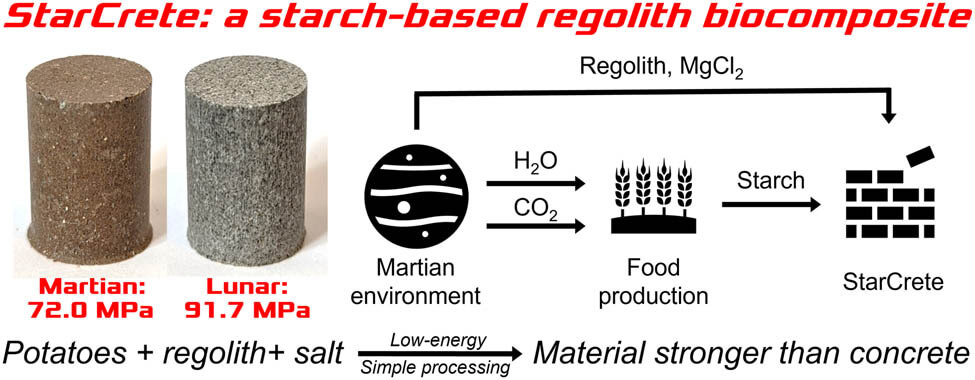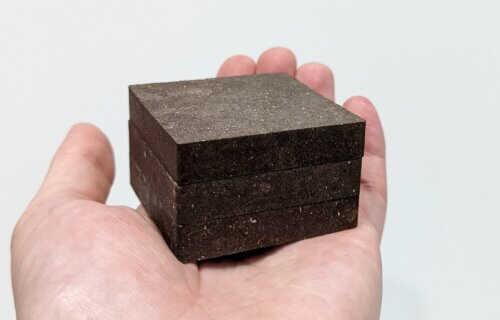MANCHESTER, United Kingdom — There’s a lot of chatter about putting boots on Mars, with the hope that humans can live there long-term. However, one issue that people don’t talk about much is where everyone would live! Using simulated Martian soil, researchers at the University of Manchester in the United Kingdom have devised a special type of concrete that could withstand the extreme temperature conditions on the Red Planet.
Known as “StarCrete,” the material uses potato starch, a pinch of salt, and space dust. At 72 Megapascals (MPa), the cosmic concrete is more than twice as strong as regular concrete (32 MPa) and has enough durability for construction work on other planets. The potato starch is the glue that holds everything together. It acts as a binder that, when mixed with Mars dust, creates a concrete-like substance. When researchers used moon dust to make Starcrete, it became even stronger, raising its strength to 91 MPa.
The work builds on previous research where the same team created concrete using astronauts’ blood and urine as a binding agent instead of potato starch. While stronger than normal concrete, the fluid-based concrete was much weaker with a strength of 40 MPa. Additionally, the product would require blood on a regular basis and which could be dangerous to draw out when in space.

“Since we will be producing starch as food for astronauts, it made sense to look at that as a binding agent rather than human blood. Also, current building technologies still need many years of development and require considerable energy and additional heavy processing equipment which all adds cost and complexity to a mission. StarCrete doesn’t need any of this and so it simplifies the mission and makes it cheaper and more feasible,” says Aled Roberts, a research fellow at the Future Biomanufacturing Research Hub and lead researcher for this project, in a university release. “And anyway, astronauts probably don’t want to be living in houses made from scabs and urine!”
A sack of dehydrated potato crisps has sufficient starch to make half a ton of StarCrete — enough material for about 213 bricks. To compare, building a three-bedroom house takes about 7,500 bricks. During their experiment, they also found that a common salt, magnesium chloride, taken from the Martian surface or from the tears of astronauts, improved the strength of Starcrete.
The next step is to move Starcrete from the lab and use it in real time. Dr. Roberts and his colleagues recently began a start-up company called DeakinBio to explore other ways to improve StarCrete.
StarCrete’s value isn’t just for Mars. It can serve as a green alternative to traditional concrete. Cement and concrete make up 8% of global carbon dioxide emissions because their production process requires high firing temperatures and loads of energy. Starcrete doesn’t need any of this. It can be made from a regular oven or microwave at normal baking temperatures, reducing energy costs.
The study is published in the journal Open Engineering.


What?
You have CO2, just make a laser and 3D print the road.